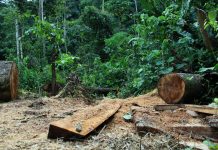As the current climate crisis continues to grow, Italian mountain forests and their fragile ecosystems could undergo unrecognisable transformations
The trees that make up European woods may no longer be seen or have significantly shifted uphill by several hundred meters.
Scientists mapped five vulnerable mountain areas in Italy, published in Frontiers in Forests and Global Change, and have modelled the potential future changes to these fragile ecosystems.
Dr Sergio Noce of the Euro-Mediterranean Center on Climate Change Foundation (CMCC) said, “Like any natural process, time is needed, and forests have times that are totally different from us.”
Understanding the bigger community picture
Forests play a crucial role in providing resources for communities. They contribute to the local economy through wood products and the harvest of wild foods like truffles.
Forests play a crucial role in providing resources for communities
They also influence water availability and quality, preserving and creating soil, safeguarding biodiversity, and offering recreational opportunities.
The forested areas of Italy currently take up a third, and the wooded areas are increasing. However, recent years have seen these forests facing challenges such as droughts, storms, and wildfires, resulting in rapid environmental shifts. Among these forests, those in mountainous regions are particularly susceptible to the impacts of the climate crisis.
To understand and respond effectively to these changes, it is essential to have access to high-resolution climate data and reliable models capable of projecting future scenarios.
This will aid a deeper understanding of the climate crisis implications for the vulnerable mountain forests and guide appropriate actions.
Noce and his research team created species distribution models for forests in five regions spanning the Apennines and the Alps. They integrated these models with climate change projections under two scenarios: one involving emissions moderation and the other assuming no changes.
Utilising this dataset, they generated maps indicating land suitability for future tree species up to the year 2050.
“The forest provides humans with very important ecosystem services – the regulation of the water cycle, the biodiversity, the wood and non-wood products, the tourism, the capture and storage of CO2 and many others. Every choice made today impacts these services for years to come and must be made with as much knowledge as possible,” said Noce.
New vulnerabilities and challenges
Noce and his research team discovered that most tree species witnessed a reduction in their suitable habitat range. At the same time, a few might expand their range beyond the existing tree line, notably the European larch and the Turkey oak.
This pattern held for both scenarios, although the extent of change varied, and the scientists suggested considering these as the potential upper and lower limits of outcomes.
In general, an upward shift in the tree line is likely, leading to the potential loss of species with smaller, more specific habitat ranges.
Furthermore, high mountain ecosystems like alpine meadows may become scarcer as trees encroach upon these current meadow areas.
The research team noted the difficulty in identifying clear winners or losers among the studied tree species.
However, they identified the silver fir and European beech as particularly susceptible to these changes. Among the five regions under study, the northern and north-eastern Apennines face the greatest risk, with all existing tree species vulnerable to alterations.
It was also observed that mixed stands of trees featuring diverse species demonstrated greater resilience.
Turning over a new leaf: Italian mountain forests
Some survivor species may introduce other vulnerabilities. The Maritime pine, a candidate for bolstering forests in the southern Apennines, is more flammable than trees, which are currently common there. Given the increased fire risk, this could pose significant challenges.
Nevertheless, the authors issued a cautionary note, highlighting that the relationship between environmental factors and the presence of species may not remain consistent with historical patterns. Unexpected changes could still emerge.
However, these advanced models offer a valuable tool for identifying species and forests that have the potential to withstand the challenges posed by the climate crisis.
Editor's Recommended Articles
-
Must Read >> Tropical forests recovering from logging emit carbon














